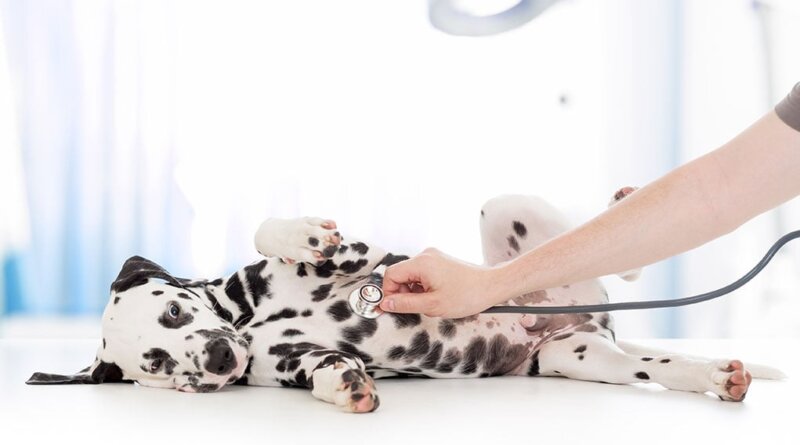Does Pet Insurance Cover Pre-Existing Conditions? – Top Dog Tips
Are you considering enrolling your pup in pet insurance? Maybe you’re wondering, “Does pet insurance cover pre-existing conditions?”
Pet insurance typically does not cover pre-existing conditions. A pre-existing condition is any illness, injury, or symptom your pet had before the policy went into effect.
Insurance companies consider pre-existing conditions a potential risk, and therefore, they will not cover the cost of treatment for those conditions.
When you apply for pet insurance, the insurance company will typically ask about your pet’s medical history, including any pre-existing conditions.
If your pet has a pre-existing condition, the insurance company may exclude coverage from your policy.
It’s important to note that different insurance companies may have other policies regarding pre-existing conditions.
Some may offer coverage for certain pre-existing conditions after a waiting period or if the state is cured or in remission.
It’s important to carefully read and understand the terms and conditions of any pet insurance policy before signing up.
More often than not, insurance does not include pre-existing accidents before availing the insurance.
Pet Insurance in a Nutshell: Does Pet Insurance Cover Pre-Existing Conditions?
Pet insurance is a health care policy that supports medical expenses in case of accidents and illnesses that may occur to your pet.
Owners may avail or customize a certain plan of their choice. After the plan has been finalized, owners may subscribe and start paying monthly.
Pet insurance is a good investment for pet owners.
Not only can this help with medical expenses, but it can also help the owners not delay treatment due to a lack of financial support.
Pet insurance is best while your pup is still young and in the best shape.
This can help assure that conditions that may appear after availing of the insurance can cover the medical expenses.
Since pet insurance may ask your pet to be examined or ask for their medical history data, they can create a plan that best fits your requested conditions as well.
Insurance will also give a period before the coverage will take place.
Before the plan kicks in, owners must pay a deductible, depending on the kind of plan the owner has availed.
After the deductible is paid, the insurance plan may proceed to the “reimbursement level.” The insurance company will pay a percentage of the remaining bill.
After the reimbursement level, owners will proceed to the “annual max.”
At this level, the insurance company will cover a specified bill amount, but the owner must pay the amount over the maximum.
Of course, not all pets are the same. Some may have breed-specific conditions, congenital diseases, and more.
Owners should be careful in creating a plan that best utilizes future expenses.
It’s best to visit your veterinarian for at least 12 months before enrolling in pet insurance. Most pet insurance will require you to do so.
What is Considered to be Pre-existing in Pet Insurance?
A pre-existing condition is any condition diagnosed and declared before availing of pet insurance.
Some insurance may include those that show symptoms before availing of the pet insurance coverage.
This may include conditions not diagnosed or treated before the subscription is available.
All conditions before the subscription can not be covered—from diagnostics, medications and consultation.
Related pre-existing conditions that occur after the subscription may not be covered.
Insurances are made to support you more with future conditions rather than the past.
Owners may discuss with their designated advisor and refer to the policy to see any precautions and reminders during the subscriptions.
It’s best to thoroughly clarify and consult the advisor about availing of the plan.
Unfortunately, not all pet insurance considers covering pre-existing conditions. More often than not, pet insurance will evaluate whether a symptom will advance to a condition.
Pre-existing conditions are categorized into two—the curable pre-existing condition and the uncurable pre-existing condition.
Here’s a breakdown of what diseases can be considered:
Curable Pre-existing Condition
Incurable Pre-existing Condition
Pet Insurances that Cover Pre-Existing Conditions
Here are some pet insurances that cover pre-existing conditions.
To confirm if your pet’s condition can be covered, you can contact them and inquire about certain packages or plans from which your pet will benefit.
ASPCA Pet Insurance
First on our list, we have ASPCA Pet Insurance.
Here, it may cover curable pre-existing conditions, aside from ligament-related conditions, if the pet is asymptomatic and is not receiving treatment for at least three months.
Costco Pet Insurance
Costco Pet Insurance can cover curable pre-existing conditions, but it will vary.
Call and inquire about their packages and choose a plan for your pet’s considerable case.
Embrace
It may cover curable pre-existing conditions if the pet is asymptomatic and is not receiving treatment for at least 12 months.
Figo
Figo can cover curable pre-existing conditions, but it will also vary. Ask about plans that can consider your pet’s condition.
Lemonade
Another pet insurance that can cover curable pre-existing conditions is Lemonade. However, it should be treated and settled for at least 12 months.
Pets Best
Pets Best may cover curable pre-existing conditions if the pet is asymptomatic and is not receiving treatment for at least three months.
However, they don’t include ligament-related conditions.
Prudent Pet
It may cover curable one-time pre-existing conditions treated and settled by a licensed veterinarian.
If the pet is asymptomatic and is not receiving treatment for at least 12 months, the insurance may consider covering the condition.
Pumpkin
Unless the problem is ligament-related, Pumpkin may cover treatable pre-existing conditions if the pet is asymptomatic and has not had treatment in at least three months.
MetLife
Aside from ligament-related conditions, it may cover curable pre-existing conditions if the pet is asymptomatic and does not receive treatment for at least 3 to 12 months.
Nationwide
It may cover curable pre-existing conditions that have been treated and settled for at least six months.
Spot
Spot can cover curable pre-existing conditions if the pet is asymptomatic and is not receiving treatment for at least three months.
What Conditions are Not Often Included in Pet Insurance?
Although the insurance company does not cover most pre-existing conditions, your pet can still avail of the insurance plan for any new illness or accident that may happen.
The specific conditions not covered by pet insurance can vary depending on the insurer and the policy.
However, some common conditions that are typically excluded from pet insurance coverage include:
Pre-existing Conditions
As mentioned earlier, pet insurance will not cover your pet’s situation before the policy goes into effect.
Hereditary Conditions
Genetic diseases like hip dysplasia are often not included in pet insurance. Congenital problems are health conditions present at birth or inherited from a pet’s parents.
Some examples include hip dysplasia, heart defects, and certain types of cancer.
Behavioral issues
Pet insurance generally does not cover behavioral problems like aggression or separation anxiety.
Preventive Care
Most pet insurance policies do not cover routine or preventive care, such as vaccinations, flea and tick prevention, and dental cleanings.
Experimental Treatments
Some pet insurance policies may exclude coverage for experimental or investigational treatments.
Cosmetic Procedures or Grooming
Pure cosmetic procedures, such as tail docking or ear cropping, are not typically covered by pet insurance.
Before choosing pet insurance, it’s important to carefully read the terms and conditions of any pet insurance policy before signing up, as coverage can vary significantly from one policy to another.
Frequently Asked Questions
Is kennel cough a pre-existing condition?
No, kennel cough and conditions such as broken bones are not considered pre-existing conditions.
However, depending on the pet insurance policy, your pet can still be covered outside waiting periods.
Does pet insurance cover asthma?
As long as the pet’s asthma did not exist at your pet’s enrollment, pet insurance can cover it.
Diseases such as asthma, diabetes, and cancer can be costly, and you’ll need a helping hand fighting these conditions.
How can I find the best pet insurance policy for my pet?
It’s best advised to carefully read and compare the terms and conditions of different pet insurance policies before choosing the most suitable one for your pet.
Before picking one, research factors such as premiums, deductibles, reimbursement rates, and coverage limits thoroughly.
Does Pet Insurance Cover Pre-Existing Conditions: Summary
The world of pet insurance can be challenging. Many questions need to be answered, such as “Does pet insurance cover pre-existing conditions?”
There are plenty of things that you should consider before enrolling your pet in one. You can’t just choose a popular company.
Pet insurance pre-existing conditions refer to any health condition your pet had before the pet insurance policy was effective.
As pre-existing conditions are not covered under most pet insurance policies, disclosing any pre-existing conditions to the insurance provider is important when applying for coverage.
The insurance provider will decide if they will exclude the coverage for the pre-existing condition or deny coverage altogether if your pet’s pre-existing condition is considered too high of a risk to insure.
However, some pet insurance providers offer limited coverage for pre-existing conditions, such as covering them after a certain waiting period or if they are in remission for a certain period.
It’s important to read the terms and conditions of the policy before purchasing it, as each pet insurance provider has its policy regarding pre-existing conditions.
RELATED: DOES PET INSURANCE COVER MEDICATION?








